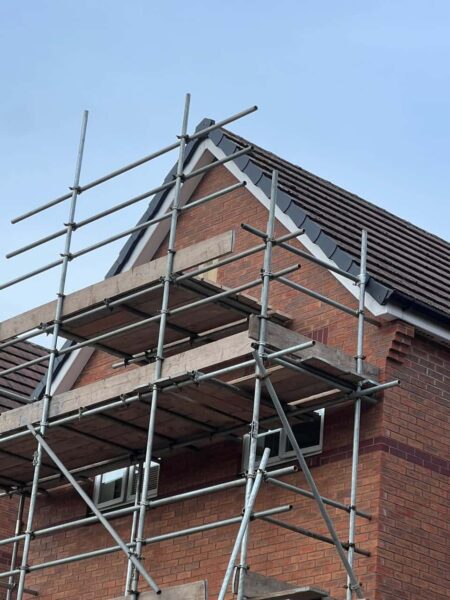How to Identify Cracked or Damaged Slate Tiles Early
Slate roofs are admired for their natural beauty, durability, and long lifespan. However, even the strongest roofing material is not immune to damage. Over time, exposure to harsh weather, temperature fluctuations, and natural ageing can cause slate tiles to crack or loosen. Early detection is key to avoiding water ingress, structural issues, and unnecessary expense later on. At EFG Roofing Maltby, we help homeowners in Maltby and the wider South Yorkshire area identify early warning signs before small issues turn into major roofing problems.
Why Early Detection Matters
Slate tiles are extremely robust, but once damaged, they can allow water to penetrate the roof structure. This can lead to damp timbers, decaying battens, or even internal leaks. Catching damage early not only maintains your roof’s appearance but also preserves its performance and lifespan.
By conducting regular roof inspections, homeowners can ensure their property remains weatherproof and energy efficient all year round.
Visual Signs of Cracked or Damaged Slate Tiles
1. Visible Cracks or Splits
A cracked slate tile may look minor, but it compromises the entire surface’s waterproof integrity. Rainwater can enter the smallest of fractures, eventually widening the damage during freeze-thaw cycles.
Inspect your roof from the ground using binoculars — look for slates that appear split or have visible hairline fractures. If several tiles show signs of cracking, this may indicate age-related wear or impact damage from debris or foot traffic.
2. Missing or Slipped Slates
One of the easiest signs to spot is missing or displaced slates. Gaps between tiles expose the underlay, allowing moisture to seep in and potentially rot the supporting timbers.
Slipped slates often occur when the fixing nails (traditionally made of iron) corrode and lose their hold — a process known as “nail sickness”. If you notice uneven rows or misaligned tiles, it’s time to call in a professional inspection from EFG Roofing Maltby.
3. Water Stains on Ceilings or Walls
Discolouration or damp patches on internal ceilings are a strong indication that your roof may have a leak. Even if the issue isn’t immediately visible on the surface, a cracked or displaced slate could be the cause.
Regularly check your loft area for damp insulation, darkened timbers, or condensation, as these may point to hidden water ingress.
4. Moss or Algae Growth
While a small amount of moss is normal, excessive growth can indicate moisture retention. Moss tends to thrive in areas where water collects — often around cracked or damaged slates.
Left unchecked, moss can lift tiles slightly, worsening water penetration and creating further cracking during cold spells.
5. Uneven Roofline or Sagging Sections
If parts of your roof appear to sag or dip, it may signal structural strain beneath the slate layer. This often results from water ingress through cracked tiles that has weakened the underlying battens or rafters.
A sagging roof should always be inspected by professionals, as it can lead to more significant structural damage if ignored.
Common Causes of Slate Damage
Understanding what causes slate deterioration can help prevent future problems:
- Weather Extremes: Constant exposure to rain, frost, and wind can gradually weaken tiles.
- Impact Damage: Falling branches or debris can crack slates on contact.
- Foot Traffic: Walking on a slate roof without proper equipment can cause fractures.
- Corrosion of Fixings: Old or rusted nails loosen over time, allowing slates to move or fall.
- Ageing and Natural Wear: Even high-quality slate eventually thins or becomes brittle after decades of service.
At EFG Roofing Maltby, our roofing specialists assess not just the visible damage but also the underlying causes, ensuring a lasting solution rather than a temporary fix.
How to Check for Damage Safely
While homeowners can perform a basic visual check from ground level, climbing onto a slate roof is not recommended due to its fragility. Instead, look for the following from a safe distance:
- Uneven or discoloured patches on the roof surface.
- Slates that appear misaligned or missing.
- Flashing that looks lifted or corroded.
- Damp marks or leaks appearing indoors.
If any of these signs are visible, arranging a professional inspection from EFG Roofing Maltby ensures your roof is examined safely and thoroughly.
Professional Inspections and Preventative Maintenance
A slate roof can last well over a century when properly cared for, but regular maintenance is crucial. Professional inspections help identify cracked, loose, or damaged tiles before they lead to widespread deterioration.
At EFG Roofing Maltby, we provide comprehensive roof checks that include:
- Assessing the condition of slates and fixings.
- Checking for nail corrosion or “nail sickness.”
- Examining flashings, valleys, and ridges for wear.
- Ensuring proper roof ventilation and drainage.
By maintaining your roof proactively, you’ll reduce the risk of costly repairs and preserve its original beauty for years to come.
When to Act
If you notice recurring leaks, damp patches, or visible slate displacement, it’s time to take action. Ignoring small defects can lead to larger structural problems, especially during the wet and windy months common in South Yorkshire.
Whether your roof is centuries old or recently installed, prompt attention ensures it continues to protect your home effectively.
Conclusion
Detecting cracked or damaged slate tiles early is essential to maintaining both the integrity and aesthetics of your property. Regular checks, proper ventilation, and timely repairs all play a vital role in preventing water ingress and structural deterioration.
At EFG Roofing Maltby in Maltby, South Yorkshire, we specialise in professional slate roof inspections, maintenance, and repair. With years of experience in traditional and modern roofing techniques, our team ensures your roof remains watertight, durable, and visually appealing throughout every season.
Call us on: 01709 212 591
Click here to find out more about EFG Roofing Maltby
Click here to complete our contact form and see how we can help with your roofing needs.

